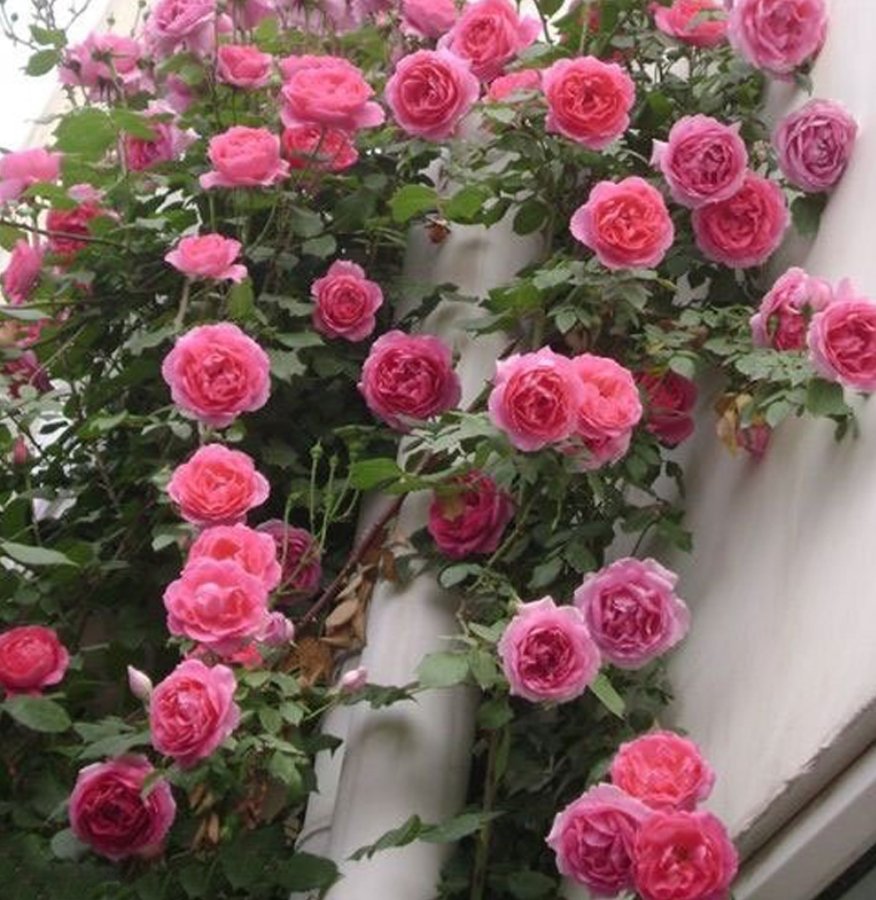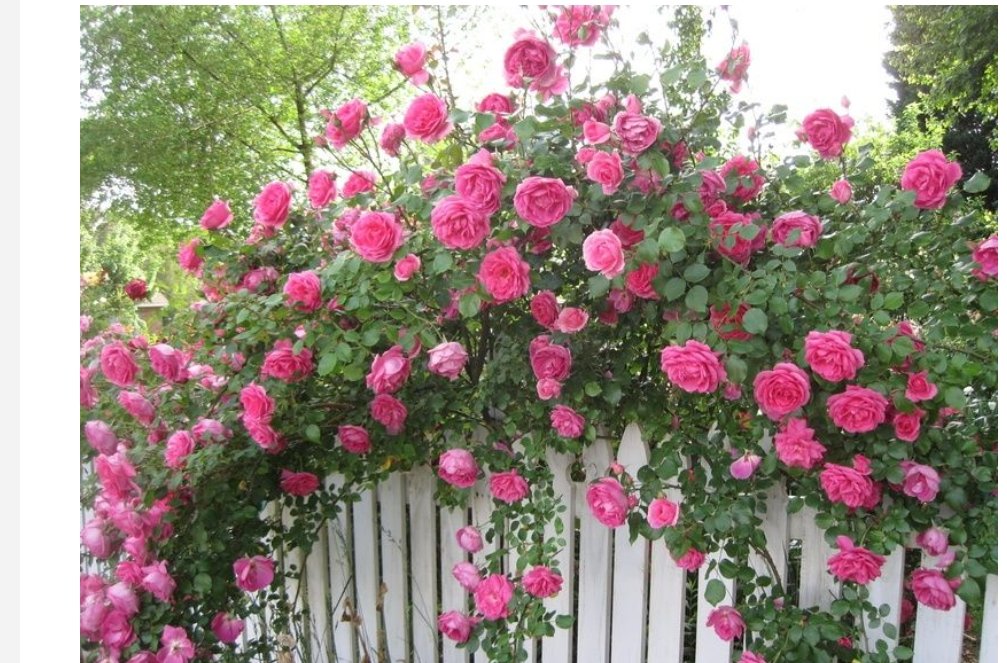大游行parade(5-7 gallon )
Parade by Eugene S. Boerner (United States, 1953).
The rose variety "Parade" is a large climbing type, reaching heights of 200 to 360 cm. The flowers are 8-10 cm in diameter and are deep pink-red, with the outer side of the petals being a lighter shade with a silver tint. Each flower cluster can bear up to 35 blooms, which have a strong fragrance. The flowers are cup-shaped, blooming individually or clustered, exuding a rich, almost classic rose fragrance that is pleasing.
"Parade" has long, trailing branches that are curved, making it easy to attach to trellises or other supports. The leaves are thick and dark green. However, despite being one of the most popular rose varieties, it is quite susceptible to various diseases and pests, with black spot disease being a common issue.
"Parade" is often compared to the variety "Climbing Queen Elizabeth" in terms of resistance to disease, with only slight differences. Generally, "Parade" has slightly better disease resistance than "Climbing Queen Elizabeth" and also exhibits stronger reblooming in the spring season.
Records indicate that the parents of "Parade" are both large climbing roses, though the exact varieties are unknown. As a result, "Parade" has inherited the best qualities of large climbing roses, including impressive growth vigor. Photographs from rose enthusiasts show that "Parade" can reach a height of 4 meters and a crown width of 6 meters within three years, with maximum growth typically achieved in five years.
Parade by Eugene S. Boerner (United States, 1953).
The rose variety "Parade" is a large climbing type, reaching heights of 200 to 360 cm. The flowers are 8-10 cm in diameter and are deep pink-red, with the outer side of the petals being a lighter shade with a silver tint. Each flower cluster can bear up to 35 blooms, which have a strong fragrance. The flowers are cup-shaped, blooming individually or clustered, exuding a rich, almost classic rose fragrance that is pleasing.
"Parade" has long, trailing branches that are curved, making it easy to attach to trellises or other supports. The leaves are thick and dark green. However, despite being one of the most popular rose varieties, it is quite susceptible to various diseases and pests, with black spot disease being a common issue.
"Parade" is often compared to the variety "Climbing Queen Elizabeth" in terms of resistance to disease, with only slight differences. Generally, "Parade" has slightly better disease resistance than "Climbing Queen Elizabeth" and also exhibits stronger reblooming in the spring season.
Records indicate that the parents of "Parade" are both large climbing roses, though the exact varieties are unknown. As a result, "Parade" has inherited the best qualities of large climbing roses, including impressive growth vigor. Photographs from rose enthusiasts show that "Parade" can reach a height of 4 meters and a crown width of 6 meters within three years, with maximum growth typically achieved in five years.
Parade by Eugene S. Boerner (United States, 1953).
The rose variety "Parade" is a large climbing type, reaching heights of 200 to 360 cm. The flowers are 8-10 cm in diameter and are deep pink-red, with the outer side of the petals being a lighter shade with a silver tint. Each flower cluster can bear up to 35 blooms, which have a strong fragrance. The flowers are cup-shaped, blooming individually or clustered, exuding a rich, almost classic rose fragrance that is pleasing.
"Parade" has long, trailing branches that are curved, making it easy to attach to trellises or other supports. The leaves are thick and dark green. However, despite being one of the most popular rose varieties, it is quite susceptible to various diseases and pests, with black spot disease being a common issue.
"Parade" is often compared to the variety "Climbing Queen Elizabeth" in terms of resistance to disease, with only slight differences. Generally, "Parade" has slightly better disease resistance than "Climbing Queen Elizabeth" and also exhibits stronger reblooming in the spring season.
Records indicate that the parents of "Parade" are both large climbing roses, though the exact varieties are unknown. As a result, "Parade" has inherited the best qualities of large climbing roses, including impressive growth vigor. Photographs from rose enthusiasts show that "Parade" can reach a height of 4 meters and a crown width of 6 meters within three years, with maximum growth typically achieved in five years.

